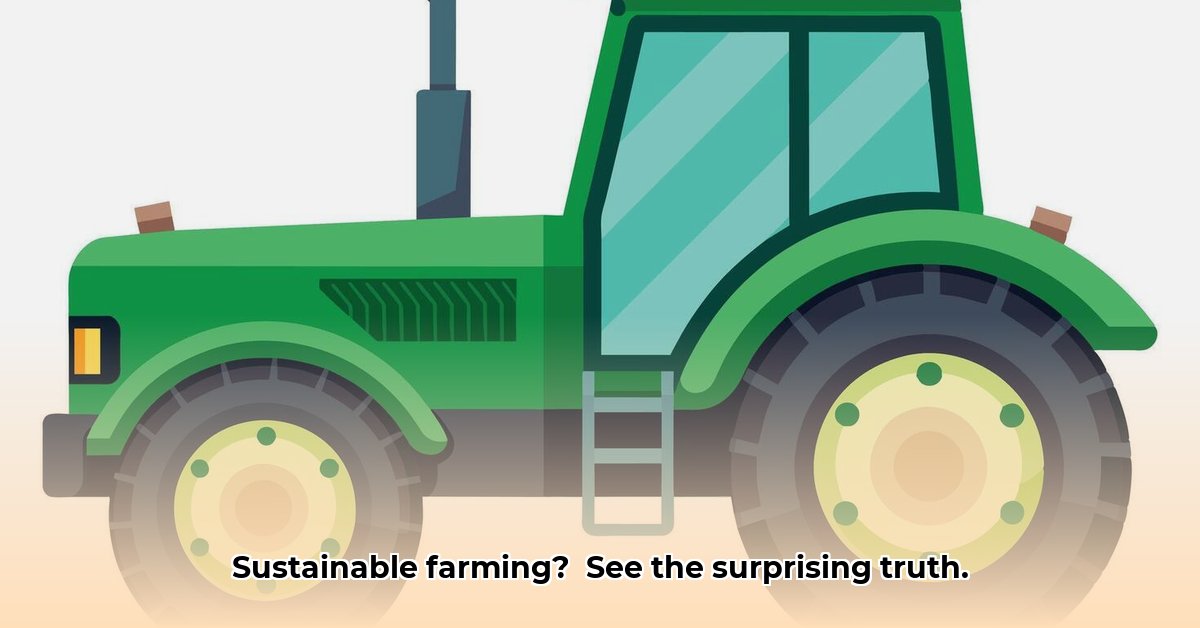
The Idyllic Image vs. the Gritty Reality
Have you ever seen those stock photos? A cartoonish tractor, bright red and impossibly clean, trundles across a field of uniformly golden wheat. A smiling farmer waves from the cab, seemingly untouched by the grime and sweat of honest labor. It's a charming image, a nostalgic postcard from a simpler time. But this carefully curated picture often obscures the complex and often challenging reality of sustainable agriculture. This isn't about demonizing happy farmers; it's about understanding the gap between idealized imagery and the messy, rewarding truth of feeding the world sustainably. See more examples of these cartoonish images.
This article explores the limitations of those simplistic portrayals, delves into the real-world struggles faced by farmers, and examines how we can create a more accurate—and ultimately more effective—representation of this vital endeavor. Because understanding the reality of sustainable farming is the crucial first step toward genuinely supporting it. The question is: how do we shift the narrative from a simplistic, often misleading, image to one that reflects the complexity and innovation at the heart of sustainable agriculture?
The Allure of the "Perfect" Picture
These idealized images are ubiquitous. A simple online search yields thousands of variations on this theme: happy tractors in perfectly tilled fields, abundant harvests seemingly appearing effortlessly. This isn't accidental. It reflects a deep-seated yearning for a romanticized view of farming—a longing for a simpler, more natural way of life. These images resonate powerfully, instantly evoking feelings of freshness, wholesomeness, and a genuine connection to the earth.
The issue isn't the positive imagery itself; inspiring visuals are essential to engagement. However, the persistent use of overly simplistic pictures paints an incomplete and potentially misleading portrait. This persistent simplification risks creating a false impression regarding farming's inherent challenges and the innovations crucial for its sustainability. The cheerful simplicity of the cartoon tractor leaves out a significant portion of the story.
What the Pictures Leave Out: The Unsung Challenges
The idyllic images deliberately omit the true struggles of sustainable farming. They typically fail to depict:
- Soil Depletion: The relentless tilling and intensive farming practices that erode precious topsoil, compromising land fertility and long-term productivity.
- Water Scarcity: The urgent need for irrigation in many areas, which places significant strain on already limited water resources and contributes to environmental stress.
- Pest Management: The constant battle against pests and diseases, often necessitating pesticide use which carries its own set of environmental hazards and health risks.
- Economic Hardships: The relentless financial pressures faced by farmers, frequently forcing them into unsustainable practices in an effort to meet market demands.
- Climate Change Impacts: The increasingly volatile weather patterns and extreme events (droughts, floods, heatwaves) that significantly impact crop yields and farm profitability.
This sanitized view also ignores the technological advancements—the innovations essential for building a more sustainable agricultural future.
The Missing Tech Revolution: Innovation's Unsung Role
Another significant omission is the impressive technological progress of recent years. Precision agriculture, utilizing GPS-guided machinery, sophisticated sensors, and data analysis, promises increased efficiency and reduced environmental impact. AI-driven solutions offer more precise crop management, optimized irrigation, and early pest detection. Vertical farming allows for year-round food production with minimal land and water usage. These critical innovations are seldom featured in the typical "happy tractor" imagery.
Why this consistent omission? Why is the narrative so frequently stuck in the past, ignoring the significant technological leaps crucial to addressing the challenges of sustainable agriculture? This lack of representation is a critical gap.
The Dangers of an Idealized Vision
This disconnect between idealized images and the stark realities of sustainable farming carries considerable risk:
- Undermining Funding and Research: A consistently rosy picture can discourage investment in crucial research into climate-resilient crops, efficient irrigation techniques, and other sustainable farming methods.
- Hindering Technological Adoption: Farmers might be less inclined to adopt new technologies if they believe traditional methods are still sufficient, hindering progress toward more sustainable practices.
- Discouraging Young People: A disconnect between the perceived and the actual realities could discourage young people from pursuing careers in agriculture, resulting in a loss of a vital skilled workforce.
- Misleading Consumers: A lack of transparency and realistic depiction can lead consumers to make uninformed choices, potentially supporting unsustainable practices.
We desperately need a far more balanced and nuanced narrative.
Creating a More Realistic Picture: A Call to Action
Bridging the gap between perception and reality requires a concerted effort from multiple stakeholders:
Enhanced Education and Outreach: Sustainable agriculture organizations, NGOs, and educational institutions should develop more compelling campaigns that tell the complete story. These should include inspiring visuals and honest portrayals of the challenges, employing relatable human stories alongside technological advancements.
Transparent Marketing Practices: Agricultural technology companies should use appealing imagery, but also clearly demonstrate the real-world benefits of their innovations, highlighting their pivotal role in mitigating environmental impacts.
Governmental Support and Policy: Governments should play a more active role by funding education and outreach programs that promote a more balanced view. They should also enact policies that support farmers in transitioning to sustainable practices.
Informed Consumer Choices: Consumers need to become more discerning, actively seeking out businesses and products that genuinely champion sustainable agriculture. This consumer demand for transparency drives crucial change.
Conclusion: A More Accurate Narrative for a Sustainable Future
We don't advocate abandoning positive imagery entirely. However, we must move beyond simplistic, almost cartoonish representations of agriculture. Our goal is to integrate compelling visuals with the true and complex stories of farmers, showcasing both the hard work and the innovations that are paving the way for a more sustainable future. It’s time to update the cartoon picture of the tractor to accurately reflect the honest, challenging, and incredibly rewarding world of sustainable agriculture.